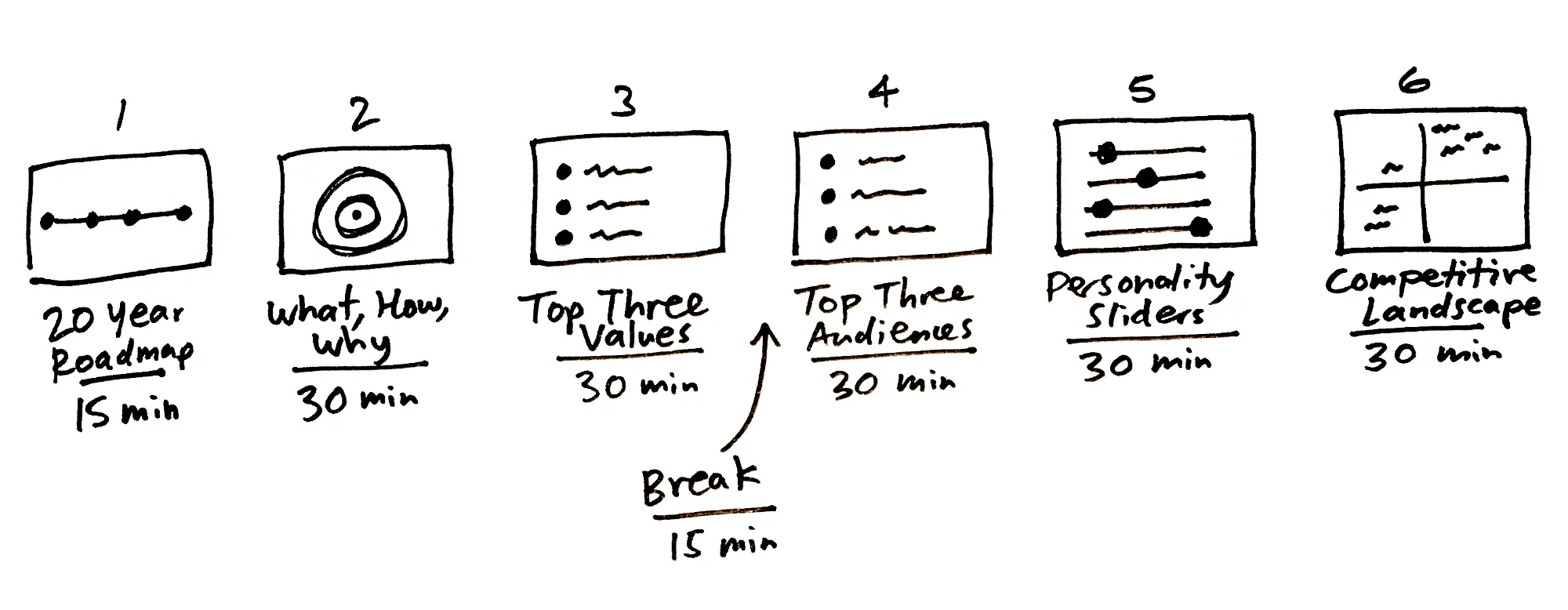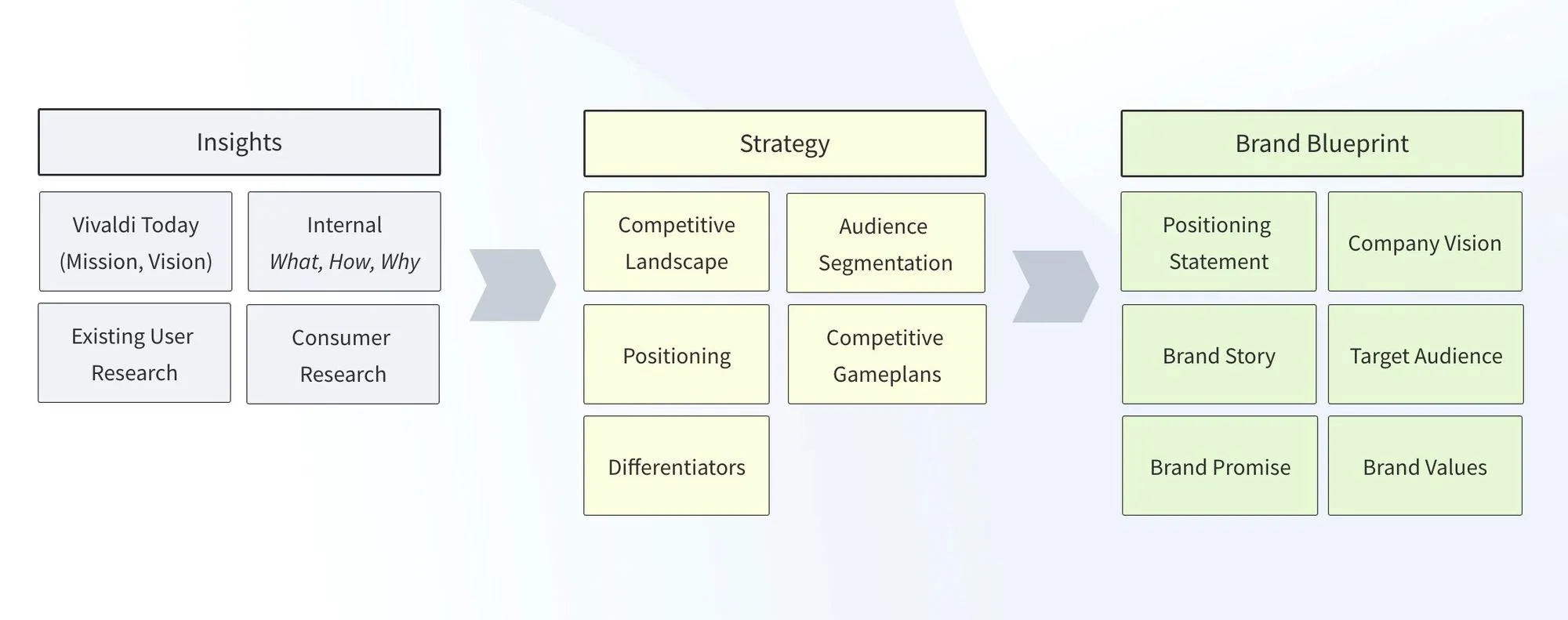Branding a Browser
What do you think of when you read the word “browser”? Let me guess – it doesn’t exactly get you on the edge of your seat. And that’s OK. That’s why we’re here.
Here’s the thing. From a marketing perspective, browsers are a super interesting challenge. They’re clearly central to how we spend our days; they’re our window into the internet – where we work, create, binge and stalk 👀. Their design choices have an immense impact on our productivity, our mental well-being and our experience of the world. And everyone uses them.
It’s hard to deny the importance of browsers.
At the same time, for many people browsers are an afterthought. They’re supposed to get out the way. The paradigm of how mainstream audiences interact with browsers hasn’t changed a whole lot since their arrival in the late-90s. A handful of tabs open to a handful of sites that the person visits every day. Most people want a browser that’s fast and (sometimes) private, and something that just works.
Vivaldi’s take on the browser is about as different as you can get. In fact, it’s approach to building software is what drew me to join them in the first place. The company’s product design philosophy is a “maximalist” approach–building-in as many features and options as possible out of the box in order to let the end user do the tinkering to get things just right.
Vivaldi is a browser that demands attention and a pretty steep learning curve, but the upside is a unique software experience. It can be complex, but working in it can also feel more streamlined than the most minimalist browsers. It can adapt and shape-shift to fit just about any use case and the way you work with it evolves as you discover new things it can do.
This isn’t a browser that fades into the background.
Vivaldi is an upstart in a world of giants, but it’s hardly a household name. Competing directly with the likes of Google, Apple and Microsoft is never an easy prospectCompetition has kicked up another notch since this article was originally written. More challengers claiming footholds in the market have cropped up, such as Brave or The Browser Company. Vivaldi has a differentiated product offering and a loyal following. The company–headed by former Opera co-founder Jon von Tetzchner–has a strong sense of ethical purpose and a product that is an attention-magnet for tech press.
We’re seeing signs of product market fit amongst Early Adopters. But what will push Vivaldi through to the next stage of growth? How can we expand beyond Early Adopters and get a wider audience more excited about (and connected to) a part of their day that’s become invisible? Will having a more refined brand position help us push through to the next stage of growth?
In the Fall of 2020 I took a deep dive to explore if refining the Vivaldi brand could take us to the next level.
The Plan
Brand development is a heavy topic. Sure, I’ve dabbled with it in the past, but this project was different. We wanted to go deep, give it the attention it deserves and come back with recommendations we could stand by as a company for potentially years to come.
At the same time, it felt like this is exactly the kind of project that can slog on and never really cross a finish line. This needed to be time-bound, focused and have a clear deliverable where we could step back and say “OK, now we’re done”.
Months before tackling this project, I’d been tipped off about the Brand Sprint process from Google Ventures (shout out to Forget the Funnel 🙌). The basic idea is to take the sprint format of software development and apply it to a branding process. A key part of the Brand Sprint method is that because it’s brief (one, 3-hour session) it allows you to get the people in the room who need to be there. This means that founders, CEOs, and the decision makers who will ultimately give the results of this project a thumbs up/down will be along for the ride.

The Brand Sprint ticked a lot of boxes: it’s fast, has a tangible deliverable and involved a handful of exercises that get you where you need to go. But somehow it didn’t feel like it would go deep enough. The process was designed for early stage startups looking to get their foundations in place. Vivaldi had 4+ years of “brand equity” and nearly 2M active users to think about; we’re not starting from scratch here. Not to mention that as a company we pride ourselves on being extremely flat and democratic; every one of the 50+ employees should feel ownership of the decisions being made and our road ahead in terms of brand.
Would a 3-hour workshop be enough? I didn’t think so. 😬 So, instead we cooked up a three-phase plan:
-
Insights: Where are we now? What can we learn from our users (past, present and potential) that would help us uncover Vivaldi purpose and the way forward?
-
Strategy: Digging into the competitive landscape. How does Vivaldi fit in and how can we carve out a niche for ourselves next to the likes of Chrome, Firefox, Safari and Brave? Positioning, competitive analysis and a long hard look at how we sell Vivaldi, who we’re targeting and how to beat the competition.
-
Brand Blueprint: Piecing together our concrete deliverable, a one-page Brand Blueprint that everyone can use as the single source of truth on brand.

Insights
Vivaldi is a very verbal company and doesn’t have a lot on paper in terms of company vision or mission statement. Sure, we have an about page on our website which I’d written a few years previously, but there is little in terms of concrete guidelines or documentation in the company’s overarching strategy.
This is, in a lot of ways, by design.
As a company, quite early on, the ethos was cemented as a kind of “organised chaos”. There’s little/no middle management, decision-making is often democratic and the product development roadmap happens, to a large degree, “organically” with a lot of input from beta testers and Vivaldi users at large.
The upside of having such an informal starting point, of course, is that it meant there was not a lot in place that would tie us down during this process. The world was our oyster. 🌈 The downside? Uncovering and putting into words the unspoken understanding of what Vivaldi is and why we’re here… well, that’s a daunting goal isn’t it.
With that in mind, we revisited the Brand Sprint concept, making a few tweaks to focus it as a tool for internal discovery. We slotted in a 2-hour brainstorming session, inviting the management team along with a few folks from various teams to get a good cross-section of the company. Hopefully the session would give us some insight into the internal understanding of:
- What is Vivaldi?
- How are we doing it better than the competition?
- Who is it for? And,
- Why are we here?
🚧 This Note is a work in progress. More work to do here